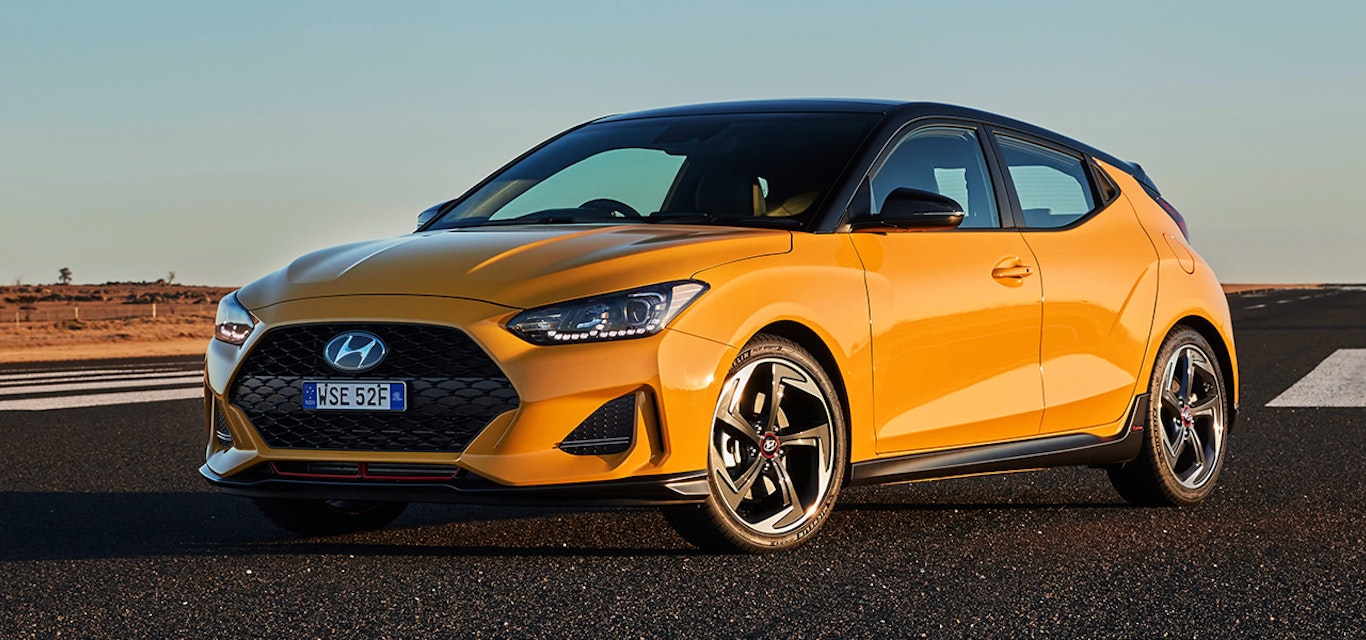First drives: Hyundai Veloster
The new and improved second generation Hyundai Veloster is the three-door coupé you've been waiting for.
Key points:
Three doors
2.0L Atkinson cycle engine
Three variants
From $33,000 drive away
It doesn’t feel like seven years since the quirky three-door plus hatch coupé was released onto the market. With two doors on the passenger side and one on the driver’s side, to me it didn’t seem like a recipe that would sell around 19,000 vehicles. Clearly, I was wrong. The look of a sports coupé and the practicality of an extra door hit the mark for many.
The second generation Veloster retains the fundamental features that won fans over, but the exterior design has evolved. A longer bonnet, steeper roofline to enhance the coupé design, Hyundai’s latest cascading grille, hatch spoiler and rear diffuser all give the new Veloster a more aggressive look.
The Veloster is available in three variants: the entry-level Veloster; Turbo; and Turbo Premium. It’s powered by a 2.0L Atkinson cycle engine, available with either a six-speed auto or manual gearbox. Turbo and Turbo Premium versions feature a 1.6L, 150kW, 265Nm turbo engine (275Nm on over-boost) coupled with a six-speed manual or seven-speed dual-clutch auto.
On the road I was immediately impressed by the ride quality. Usually this isn’t the strong suit for sports-orientated vehicles, however Veloster has it nailed.
It’s equally as impressive when heading to some twisty stretches of road with flat cornering and well-weighted steering. The Australian suspension engineers have waved the wand over the Veloster and it shows. All models get 18” alloys shod with Michelin Pilot Sport 3 tyres. The entry level non-turbo variant is a handy city and highway cruiser, particularly in auto form. But if you want to enjoy the curves of the road, then either of the Turbo variants should be your choice.
Inside, the Veloster presents a tablet-style infotainment screen – 7” in the entry-level model and 8” in the Turbos. Connectivity includes Apple and Android systems with bluetooth streaming. Navigation is also standard in the Turbo models. Front passengers are well-catered for in terms of space, but the rear seats are a bit tight. Rear door access has been increased and the roofline has been extended rearward 450mm, fixing a headroom shortcoming in the previous model.
Hyundai has indicated Australia and New Zealand are the only right-hand drive markets in the world where the second generation Veloster is available. Given the complexity and costs associated with moving the third door to the other side of the vehicle, the Australian Hyundai team must have a great relationship with head office in Korea.
The 2.0L Veloster manual kicks off at around $33,300 drive away and tops out with the Turbo Premium DCT auto at $47,700. Hyundai is currently offering a seven-year warranty up until the end of the year.
